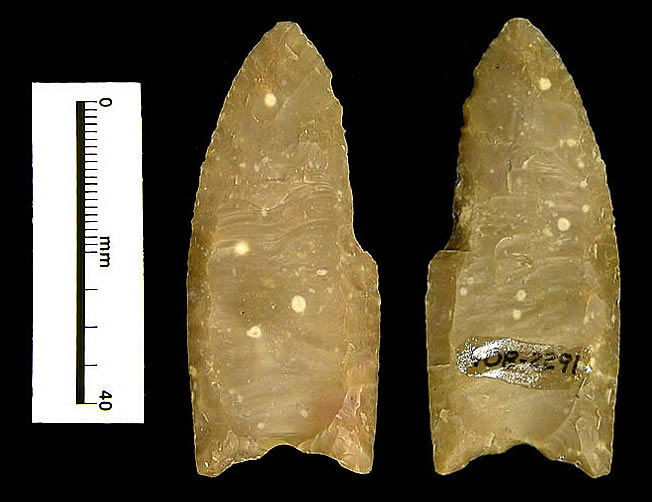The other day I was lucky enough to spend time with family
in the Piney woods of Deep East Texas.
During that time I made a spear with my cousin Bradley and set off on a
short romp around the woods.
While Bradley observed the process that was being
demonstrated to him for the first time, I couldn't help but think of role that cultural
transmission played in forming patterns of stone tool production throughout the
archaeological record. The material record, those artifacts measured by
archaeologists, are the “hard parts” of culture (Dunnell 1978) and may be seen
as the skeletal remains of culture, akin to bones that are the representation
of the human phenotype that survive after death.
 |
| Cutting the main shaft and cleaning it prior to straitening |
 |
| Ready to go! |
Cultural transmission occurs when knowledge is passed to
others. There are multiple modes of
transmission. For instance, vertical
transmission occurs with parent-offspring teaching. Oblique transmission describes learning, in
this case a craft skill, from a non-parent of the older generation. If interested, Stephen Shennan (2009) has
compiled a great edited volume on cultural transmission and cultural evolution.
In the following study Eerkens and Lipo (2005) focus on the
effect of small unintentional changes in the shape of stone points through
unbiased transmission from parent to offspring (vertical transmission). In each subsequent generation a 3% error rate
in reproduction is added to the length of a projectile point and is then
transmitted to the next generation in a Markov chain manner such that change
could be simulated over time. The extent of error could be positive or negative
for each generation, meaning potentially longer or shorter points from the
previous generation could appear. The
likelihood for length error will behave in a stochastic manner due to
unintentional error during unbiased transmission such that projectile length
will have a random probability of distribution.
The authors model the process across 400 generations of 10 lineages and
allow no interaction or borrowing (horizontal transmission) between traditions
of manufacture.
 |
| Figure adapted from Eerkens and Lipo (2005). |
The results (Fig 1) show that simple copying error during
cultural transmission may cause traditions of manufacture to drift quite far
from the original form and may increase or decrease slightly per generation
(Eerkens and Lipo 2005:322).
So cheers to oblique transmission, technological innovation
and morphological drift! Well done Bradley.
 |
| Out and about in beautiful East TX |
 |
| Not exactly what we were hunting for, cool to look at though! |
REFERENCES
Dunnell, R.C.
(1978).
Archaeological potential of anthropological and scientific models of
functoin. In: Dunnell, R.C., Hall. E.S., (eds.), Archaeological Essays in Honor
of Irving Benjamin Rouse. Mouton, The Hague, pp 41-73.
Eerkens, J. W. and C. P. Lipo.
(2005). "Cultural
transmission, copying errors, and the generation of variation in material
culture and the archaeological record." Journal of Anthropological
Archaeology 24(4):316-334.
Shennan, S.
(2009).
Pattern and Process in Cultural Evolution. In Pattern and Process in
Cultural Evolution. S. Shennan (ed.). Univiersity of California Press. Los
Angeles.

























































